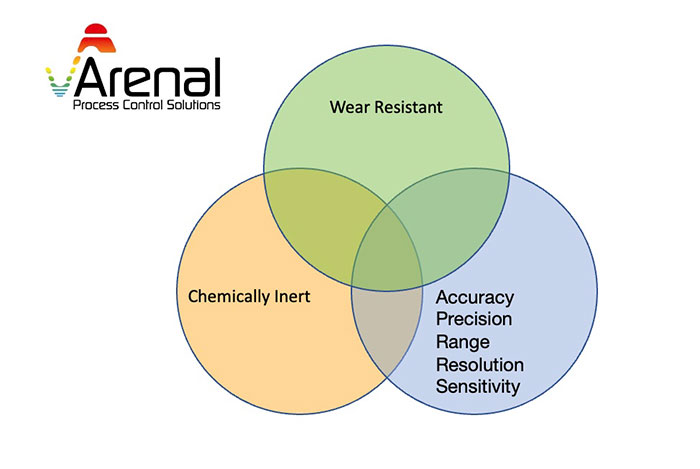
So what is there to be so exited about “star dust” when you apply density measuring in your process?
Well, that depends on your appetite*1 for knowledge. The reason that we are so exited about “star dust” has to do with the characteristics of silicon carbide.
Everything starts with measurement, to measure is to know, if you know it, you can improve it. This applies to everything. So
regardless of what is measured, the ideal measurement probe has three main characteristics.
• Wear resistant
• Chemical inert
• Performance characteristics (accuracy, precision, range, resolution, sensitivity)
So selecting the right material for the probe is crucial. The only material that is both wear resistant and chemical insert is Sintered Silicon carbide (SSiC). Silicon carbide (SiC) is a hard chemical compound containing silicon and carbon. Grains of silicon carbide can be bonded together by sintering to form very hard ceramics that are widely used in applications requiring high endurance. In fact silicon carbide is the 2nd hardest material (2nd after diamonds).
Sintering is the process of compacting and forming a solid mass of material by pressure or heat without melting it to the point of liquefaction. Sintering happens as part of a manufacturing process used with metals, ceramics, plastics, and other materials. The atoms in the materials diffuse across the boundaries of the particles, fusing the particles together and creating one solid piece.
The measurement probe we use for density measurement is made of silicon carbide. This allows for eight main advantages:
• No radioactive material
• No need for specialized personnel
• Environmentally conscious entrepreneurship
• Maintenance free
• Inline
• Drill free & Accurate
• Immediate response
• Submersible
If you want to learn more about the accuracy of our solution, we recommend to read this article as well.
If you have any questions or you want to learn more, please contact us.
#1 Did you know that silicon carbide can be found in meteors and each silicon carbide grain carries a signature of the isotopic composition of its parent star. If you want to learn more about that, please read this article. https://news.asu.edu/20190228-discoveries-silicon-carbide-stardust-meteorites-erupting-stars

 Français
Français  Español
Español  简体中文
简体中文  Arabic
Arabic 